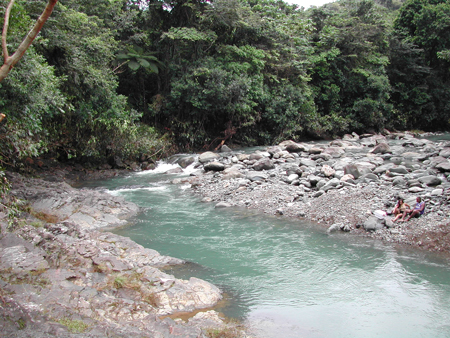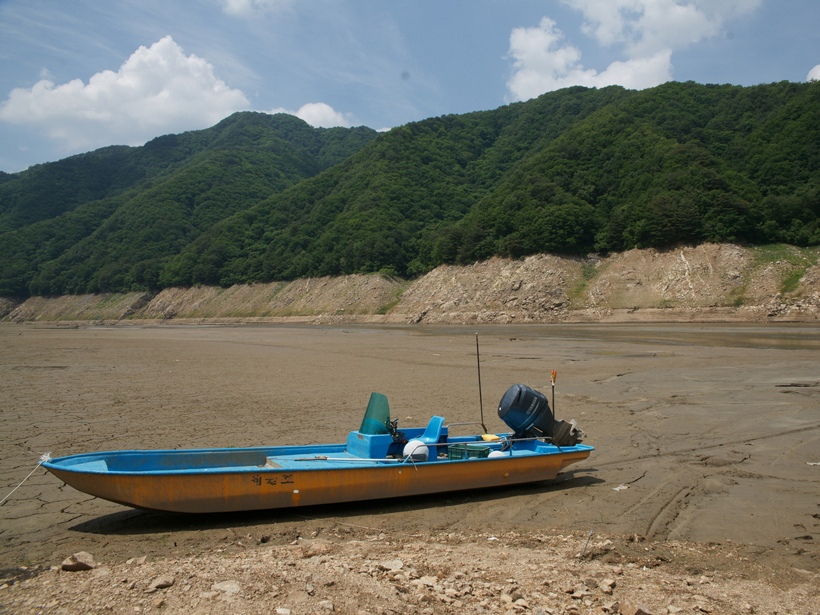Extreme climate events (ECEs) such as tropical storms and hurricanes, thunderstorms, heat waves, droughts, ice storms, and snow storms have increased and are projected to further increase in intensity and frequency across the world. These events are expected to have significant consequences for aquatic ecosystems with the potential for large changes in ecosystem processes, responses, and functions.

Such changes could impair the important services these ecosystems provide and could thereby affect the well-being of our environment and society—“Superstorm” Sandy serves as a compelling recent example. There is an urgent need to better understand how ECEs affects aquatic ecosystem processes and functions over the short and long terms and how we can manage and mitigate these effects to protect environmental and human health.
To address key knowledge gaps and new challenges, an AGU Chapman Conference was convened earlier this year in Puerto Rico. More than 115 scientists, including 22 students and a range of early-career to senior professionals from around the world, attended the conference. The group of attendees was particularly notable for the diversity of disciplines (e.g., hydrology, geomorphology, ecology, climatology, soil science), spatial and temporal scales of investigations (microbes to large lakes and minutes to centuries), and range of climate and ecoregions represented (polar to tropical).
The conference was organized around six themes. Key questions under each theme were addressed through oral and poster presentations and breakout group discussions.
Conference participants recognized that a framework for assessing the frequency and magnitude of climate extremes, as well as the ecosystem response, is urgently needed.
Conference participants recognized that the definition of ECEs varied by discipline and that a framework for assessing the frequency and magnitude of climate extremes, as well as the ecosystem response, is urgently needed. They agreed that recent availability of high-frequency, in situ electronic sensors for monitoring water chemistry is an exciting technological development that enhances our ability to monitor ECEs. A broad range of examples highlighting system thresholds, regime shifts, and nonlinear responses for water, sediment, and nutrient fluxes was presented.
The value of long-term data sets and experimental studies for studying ECEs found strong and unanimous support among the attendees. In the face of a changing climate, ecosystem baselines have shifted, and ECEs may not necessarily elicit the same response now as in the past; one presenter alluded to this as “shooting at a moving target.”
It was broadly recognized that in addition to physical and chemical changes in aquatic ecosystems, ECEs could also irreversibly modify the biological character of ecosystems through changes in microbial communities and aquatic food webs. ECE effects could also differ dramatically across land cover type, and legacy land uses could either magnify or dampen the effects of ECEs.
The conference took place just as a new administration was taking charge in Washington, D. C.
Given the potential intensification of ECEs with climate change, many researchers voiced the need to reevaluate the effectiveness and performance of management practices and restoration strategies. Participants agreed that identifying the key factors that make ecosystems more vulnerable or resilient to ECEs was a crucial step toward improving our understanding and managing ECEs.
The conference took place just as a new administration was taking charge in Washington, D. C., and there was considerable uncertainty among attendees about the future U.S. direction and priorities regarding science and climate change. Attendees were very passionate about the conference theme and voiced strong support for evidence-based science and the need to invest more, not less, in understanding anthropogenic effects on Earth’s climate.

Midway through the conference, attendees visited watershed sites in the Luquillo Experimental Forest that were severely affected by Hurricane Hugo in 1989. Despite the widespread disturbance caused by the hurricane, the forests have recovered rapidly, indicating the resilience of some tropical ecosystems to ECEs.
Key lessons and observations from the conference will be published in two separate journals, Biogeochemistry and the Journal of Geophysical Research: Biogeosciences, expected to be released online by June 2018. These special issues will include papers synthesizing the current state of knowledge, new ideas that emerged from the conference, and specific case studies on ECEs and their impacts.
The conference topic and location provided a great venue for attendees to network, exchange ideas, and build new collaborations. As one attendee noted, “I left San Juan with many new ideas and the conference had a significant impact on my future research goals and strategies.”
The organizers thank the U.S. Department of Agriculture, National Science Foundation Experimental Program to Stimulate Competitive Research, National Critical Zone Observatory program, U.S. Geological Survey, and International Institute of Tropical Forestry for their support of the conference.
—Shreeram Inamdar (email: [email protected]), University of Delaware, Newark; Jamie B. Shanley, U.S. Geological Survey, Montpelier, Vt.; and William H. McDowell, University of New Hampshire, Durham
Citation:
Inamdar, S.,Shanley, J. B., and McDowell, W. H. (2017), Aquatic ecosystems in a changing climate, Eos, 98, https://doi.org/10.1029/2017EO076549. Published on 29 June 2017.
Text © 2017. The authors. CC BY 3.0
Except where otherwise noted, images are subject to copyright. Any reuse without express permission from the copyright owner is prohibited.

